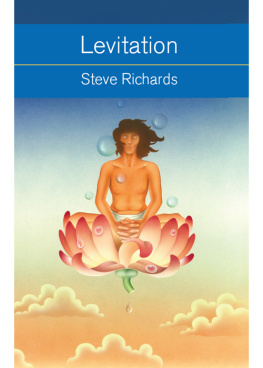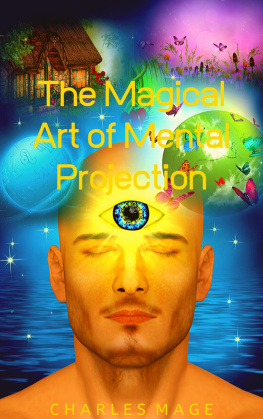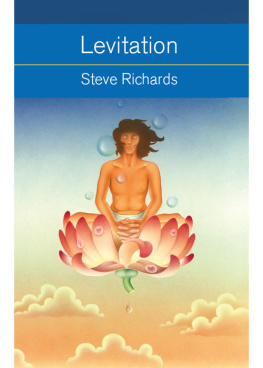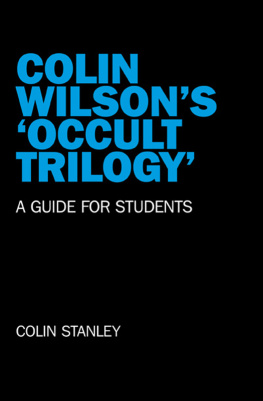
This edition first published in 2015 by Weiser Books,
an imprint of Red Wheel/Weiser, LLC
With offices at:
665 Third Street, Suite 400
San Francisco, CA 94107
www.redwheelweiser.com
Copyright 1980 by Steve Richards
All rights reserved. No part of this publication may be reproduced or transmitted in any form or by any means, electronic or mechanical, including photocopying, recording, or by any information storage and retrieval system, without permission in writing from Red Wheel/Weiser, LLC. Reviewers may quote brief passages. Originally published in 1980 by Aquarian Press, a part of the Thorsons Publishing Group, ISBN: 1-85538-089-7.
ISBN: 978-1-57863-579-5
Library of Congress Cataloging-in-Publication Data available upon request
Cover design by Graham Lester
Text design by Jane Hagaman
Printed in the United States of America
M&G
10 9 8 7 6 5 4 3 2 1
www.redwheelweiser.com
www.redwheelweiser.com/newsletter
CONTENTS
ACKNOWLEDGMENTS
I would like to thank Mr. Stephen Rozman of Tougaloo College for his very interesting interview; the editors of The Theosophical Publishing House in Madras, India, for permission to quote some early articles from The Theosophist; Mr. Don Barcell of Campbell, California, for the loan of his photograph and permission to reproduce it; the staff of the Sivananda Yoga Vedanta Centres, International, for the photographs and information they provided, as well as for permission to reproduce their photographs; and finally the staff of the Olcott Library and Research Centre in Wheaton, Illinois, for their assistance in locating articles and loaning documents.
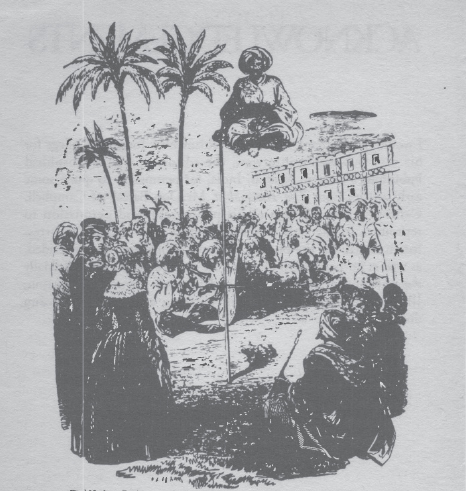
The Madras Brahman who claimed to sit in the air by Yoga powers.
Reward of Rs. 1,000.
The above sum is offered to any one who, by yoga powers, will raise himself three feet from the ground, and remain suspended for ten minutes.
Levitation in British India: the Madras Brahman who sat on air. From The Sacred Books of the East Described (1897).
CHAPTER ONE
CAN MAN FLY?
Levitation! Is it for real? Students of psychic phenomena have been asking that question for centuries, and not getting many answers. Levitation is a rather unique kind of psychic phenomenon. It is not like astral projection, or psychometry, or precognition. It is the sort of thing Joseph of Cupertino might have done three centuries ago, or that some mahatma in India or Tibet might do today. But it is not the kind of thing an ordinary person would expect to do. And certainly not in the Western World.
That is why a lot of eyebrows were raised in mid-1977 when the Maharishi Mahesh Yogi announced that not only could he levitate; he could teach others to do it, too. After all, the Maharishi Mahesh Yogi is famous for his Transcendental Meditation (TM) technique. He has a reputation for methods that are not only simple to teach and easy to learn, but also that workand work well.
Levitation is the most profound of the siddhis yet available, a TM instructor told me. Maharishi says it's all a matter of mind-body coordination. Tell your body to walk and it does it. No problem. But tell it to rise into the air by mere intention and it doesn't. Improve your mind-body coordination and you can do that too.
It all sounded familiar. Since the early seventies TM people have been amassing study after study, showing that meditators have better memories than other people, sleep better, run faster, make better grades in school, even see better. One TM instructor I interviewed even says meditators have fewer cavities. But levitation?
It's not so strange, was the reply. In the Vedas, which are the oldest records of human achievement, there are stories of people doing these things. These abilities were heretofore considered to be supernatural, but they are now being found to be within the range of normal human potential.
The emphasis of the programme is not an isolated demonstration of powers, but rather an accelerated growth towards the state of Enlightenment through the development of special abilities which enliven consciousness in the field of all possibilities.
I was told that the programme is called the TM-Sidhi Programme, sidhi being the preferred TM spelling of the Sanskrit word siddhi, which means accomplishment, or occult powers. There are Eight Great Siddhis in the yogic tradition, from which TM is ultimately derived, and probably even more in the Sidhi Programme. Levitation is only one of them.
You mustn't think in terms of flying for long distances, I was told. Our people are flying only a few feet at a time now. It's a progressive development. Take, for example, the siddhi of unlimited strength. The first time you do the siddhi you may feel only a slight sensation. But each time you do it you get stronger and stronger, until finally you do have unlimited strength.
Maharishi says that there are sixty-four channels of Enlightenment in the human body through which the siddhis manifest themselves. You perform certain exercises and the siddhis emerge from out of the Absolute.
There are about seventy of these siddhis in all, but we don't practise all of them. Maharishi has found some of them to be more beneficial than others.
Among those Maharishi has found to be more beneficial are Strength, Friendliness, Omniscience, and Invisibility, as well as Levitation. There are rumours that some meditators are even walking through walls.
Maharishi mentioned the siddhis as early as 1962, when he wrote The Science of Being and Art of Living. But in the early years of the TM movement there was too much to do just promoting the idea of meditation and the basic TM technique to worry much about powers. The channels of communication were kept open, though, and advanced meditators were encouraged to tell of their experiences at teacher training courses.
They had plenty to tell. Some felt that they had become invisible or that they could see through other people. Still others had visions of spiritual beings. One instructor, now out of the movement, recalls:
I frequently experienced the sensation of becoming gaseous, first filling the room, then expanding over the Mediterranean Sea (while in Spain), and finally extending throughout the universe.
These experiences are of course known to Western scientists. In The Relaxation Response, Dr. Benson of Harvard University says that from our personal observations, many people who meditate for several hours every day for weeks at a time tend to hallucinate. But these scientists tend to write the experience off. The theory is that meditation causes sensory deprivation, and that in turn causes the brain to create its own excitement in the form of siddhi experiences.
There is not much doubt, though, that the siddhis experienced by advanced TM meditators are the very same siddhis described in ancient yogic texts. And that raises a serious question. If the siddhis are not realif they are in fact mere symptoms of sensory deprivationan important part of the yogic tradition is called into question.
As a yogi, and a yogi who had access to large numbers of devoted siddhi-experience experiencers, Maharishi felt the need to determine the truth. He purchased two old hotels in Seelisberg, a little town in Switzerland overlooking Lake Lucerne, and founded the Maharishi European Research University (MERU).
Next page
